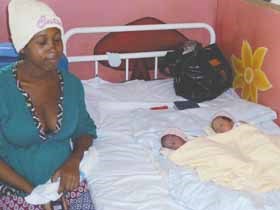For a brief time in 2010 the entire world was focused on Haiti. A 7.0 magnitude earthquake devastated the tiny Caribbean nation leaving more than half a million people injured or dead and 1.5 million homeless.
The capital city, Port au Prince, was virtually razed. With 60 per cent of government and administration buildings and 80 per cent of schools destroyed, as well as, 25 per cent of civil servants dead, the country, already the poorest in the western hemisphere, was on the verge of total collapse.
The world responded. Governments, aid agencies and individual donors pledged hundreds of millions of dollars. Celebrities beat the drums of awareness. Volunteers poured into Haiti. It was an outpouring of compassion that was, relatively speaking, well-sustained.
But there is always another humanitarian crisis; attention and money are quick to shift to the next big thing, such as the 2011 tsunami and nuclear crisis in Japan. But three years on, while the spotlight has dimmed and the media throng has long moved on, there is still a massive cleanup underway in Haiti.
Cindy Fuchs, Saskatchewan provincial director for the Canadian Red Cross (CRC), just returned from island nation in December and was in town February 12 for a volunteer appreciation night at Mano's.
She estimated at the peak of the disaster relief effort there were 100 times more resources in the country than for ongoing development projects.
Fuchs said it's important for an organization such as CRC to keep the public up-to-date not only for ongoing development, but for the next crisis.
"Do we need more money for Haiti?" she asked. "Not for the disaster relief, but Haiti is a developing country; it will always need money. So, to be able to bring it back to the attention of the media helps people build trust in what we're doing, so that the next disaster that comes, they say, 'oh yeah, I remember, you reported back, let us know what's happening,' then they make that contribution to the next disaster."
If bringing media attention back to the Red Cross Haiti mission is part of the reason she is travelling around Saskatchewan, it couldn't come at a better time. Much of what little media attention is left on the Haitian crisis has been critical of how reconstruction money has been spent.
On December 24, 2012, The New York Times published a scathing report.
"Two and a half years after the earthquake, despite billions of dollars in reconstruction aid, the most obvious, pressing need-safe, stable housing for all displaced people-remained unmet," the article said.
"In December 2012, an examination by The New York Times of the $7.5 billion in aid disbursed to that date showed that more than half of the money had gone to relief aid. Of the rest, only a portion went to earthquake reconstruction strictly defined. Instead, much of the so-called recovery aid was devoted to costly current programs, like highway building and H.I.V. prevention, and to new projects far outside the disaster zone, like an industrial park in the north and a teaching hospital in the central plateau.
"Meanwhile, just a sliver of the total disbursement-$215 million-had been allocated to the most obvious and pressing need: safe, permanent housing."
Canadians gave the Red Cross $210 million for earthquake relief in Haiti. As of September 30, 2012, CRC had spent $157 million, according to its in-house report Haiti: Three Years After the Earthquake. Of that, $64.3 million, or roughly 42 per cent, went to building 7,500 hurricane and earthquake resistant homes in Jacmel and Leogane, two of the hardest hit towns.
"They withstood Hurricane Sandy so that was a good indicator that they were built properly, as well," Fuchs said.
She estimated those new houses are now home to roughly 25,000 people.
She also reported she had just received an update that CRC had finished relocating 90,000 more people from camps to more permanent homes in January.
According to the CRC report, the remainder of the $157 million was spent on: emergency response and relief support (33.9), cholera outbreak response (2.9), other shelter and resettlement programs (25.2), health programs (2.3) and other recovery programming and support, including violence and abuse prevention and disaster risk reduction (28.5).
The CRC recovery effort in Haiti will continue for another seven years during which time, Fuchs said, they will build seven health centres and complete the rebuilding of a hospital, which is already partially open with a maternity ward and paediatric ward operating.
Local volunteers, who are on-call for disasters in the Yorkton area, such as fires and floods responded positively to her presentation, Fuchs said.
"I think they were excited," she reported. "Some of the comments were, it allowed them to sort of feel a part of a bigger organization. I think the other thing, the indication was, they felt pretty good about the fact good things were happening and there was progress."
But the progress is slow, at least from a Canadian perspective, exacerbated by the sheer devastation, loss of life and lack of infrastructure.
"What they were left with was starting from scratch and rebuilding, so you can understand the complexity of that in itself," Fuchs said, adding that she and the people she talked to, are cautiously optimistic.
"They're still very poor, it's one of the poorest countries in the world, not sure when that will change, if it will ever change, but when we talk to Haitian people they're quite hopeful. My sense is that it'll be better than it was before the earthquake."




